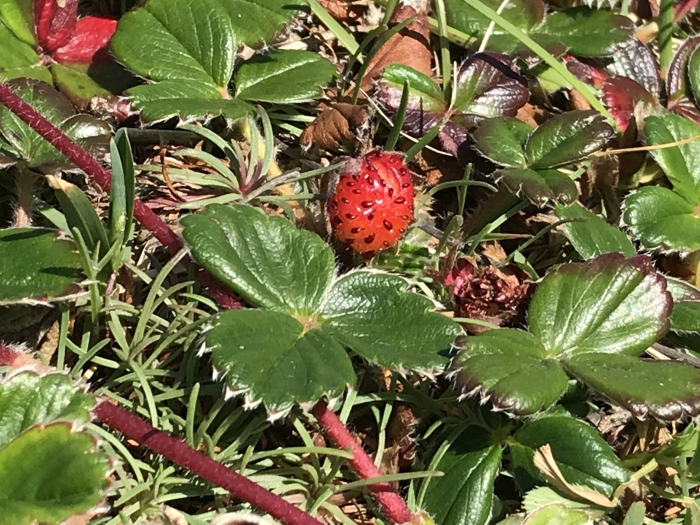Beach Strawberry
(Fragaria chiloensis)
Beach Strawberry (Fragaria chiloensis)
/
/

Aaron Liston
CC BY 4.0























Estimated Native Range
Summary
The Beach Strawberry is valued for its ornamental qualities, including its attractive foliage and fruit, as well as its ability to stabilize soil in coastal gardens. It is used in landscaping for ground cover, in rock gardens, and for erosion control. This strawberry species is drought-tolerant once established and prefers well-drained soils with regular to moderate water. It thrives in full sun to part shade conditions. While it is not commonly afflicted by serious diseases or pests, it can host the strawberry aphid, Chaetosiphon fragaefolii, which is a vector of the strawberry mild yellow-edge virus. Gardeners should be aware of this potential issue and manage aphid populations accordingly.CC BY-SA 4.0
Plant Description
- Plant Type: Herb
- Height: 0.3-0.5 feet
- Width: 2-3 feet
- Growth Rate: Moderate
- Flower Color: N/A
- Flowering Season: Spring, Summer
- Leaf Retention: Evergreen
Growth Requirements
- Sun: Full Sun, Part Shade
- Water: Medium
- Drainage: Fast, Medium
Common Uses
Bee Garden, Bird Garden, Drought Tolerant, Edible*Disclaimer: Easyscape's listed plant edibility is for informational use. Always verify the safety and proper identification of any plant before consumption., Erosion Control, Fragrant, Groundcover, Low Maintenance, Street Planting
Natural Habitat
Native to sandy soils in coastal dunes and bluffs above the high tide line in temperate to warm-temperate regions
Other Names
Common Names: Beach Strawberry, Coastal Strawberry, Chiloe Strawberry, Pine-Strawberry, Sand Strawberry
Scientific Names: , Fragaria chiloensis, ? chilensis, Fragaria chilensis, Fragaria chilensis, Fragaria chiloensis, Fragaria chiloensis, Fragaria chiloensis var. scouleri,
GBIF Accepted Name: